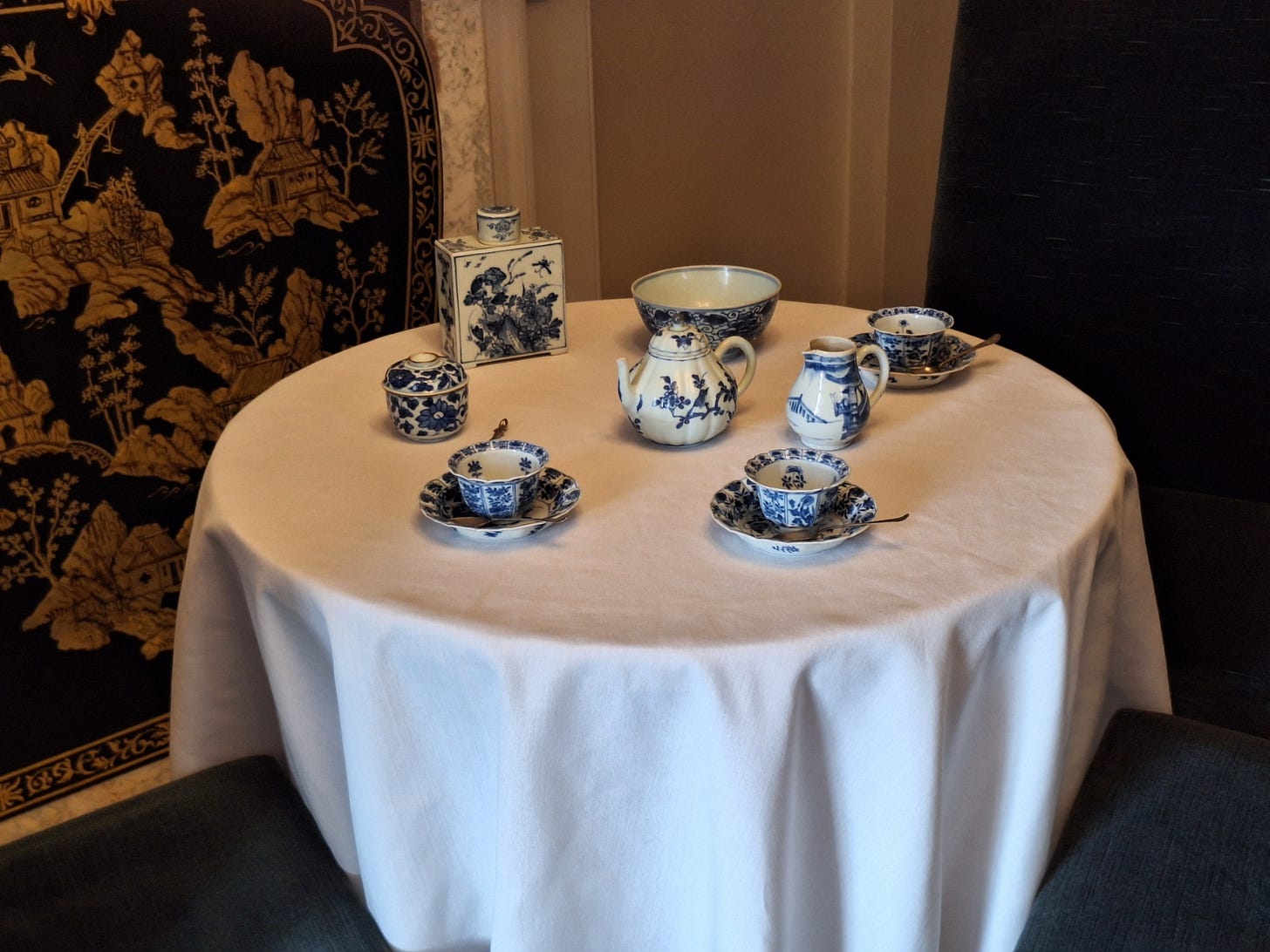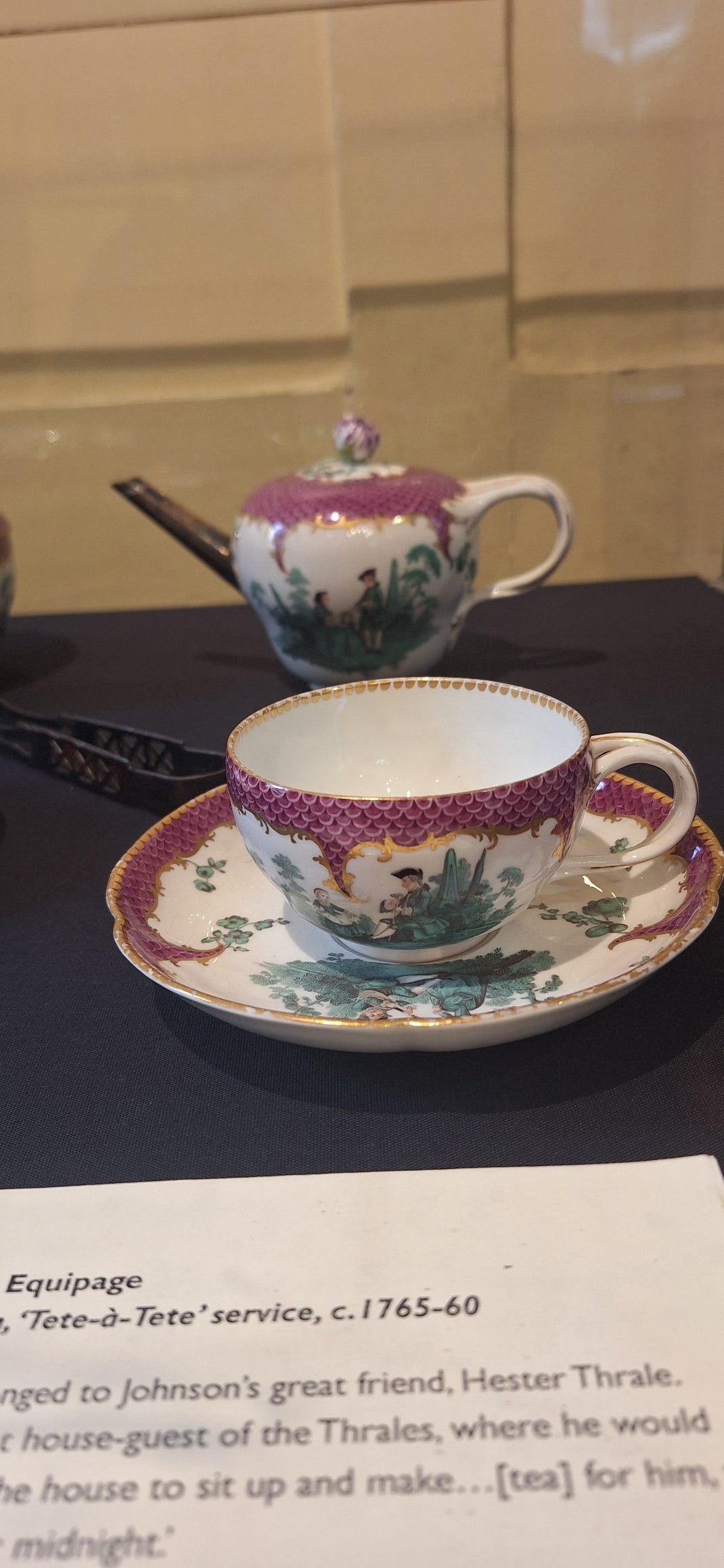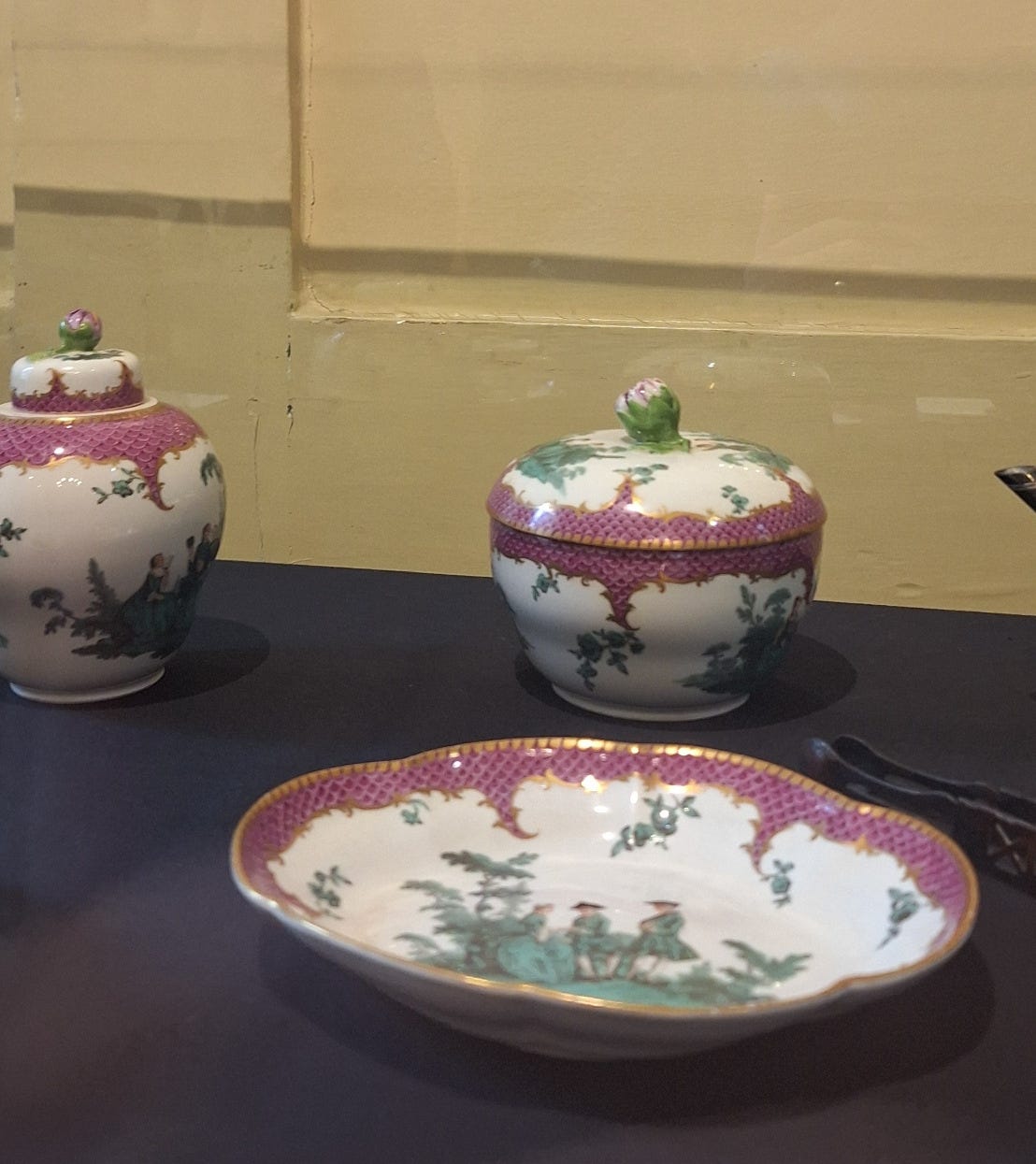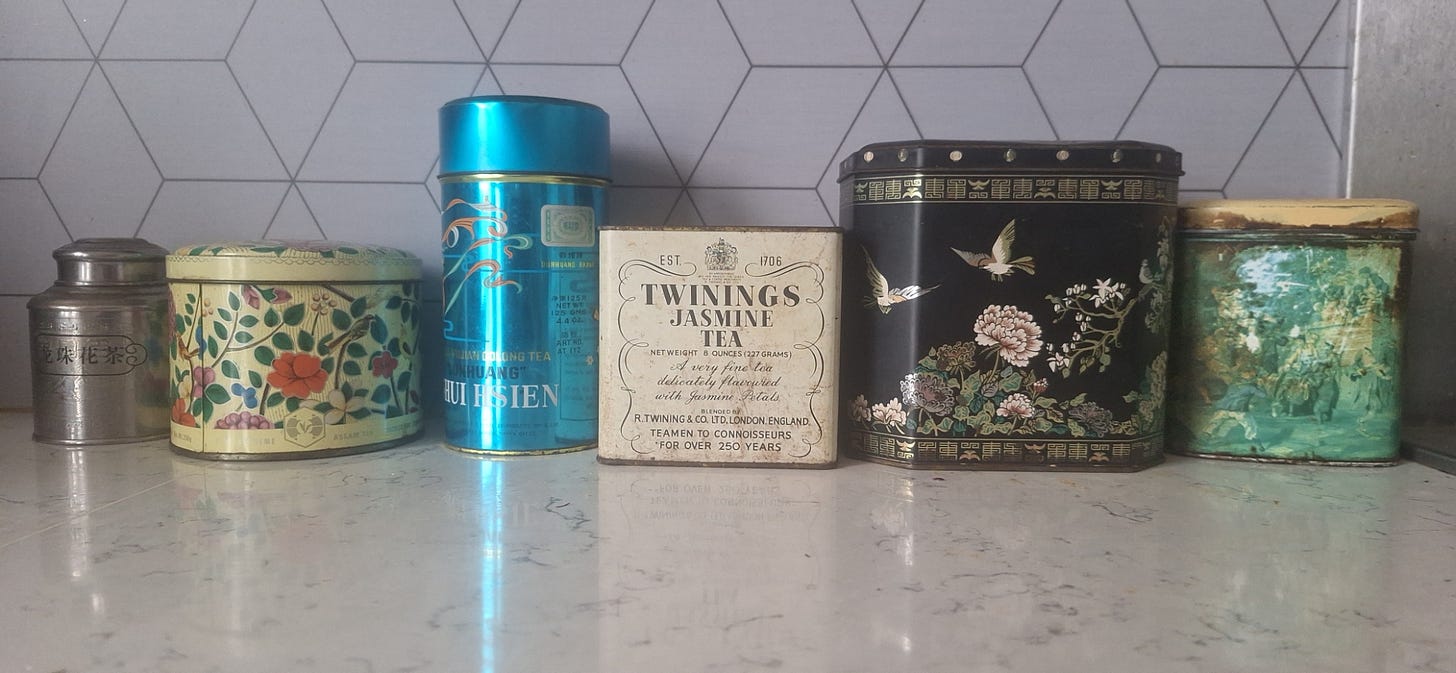The breakfast room at Marble Hill House features a table set for morning tea.

The house was built for Henrietta Howard, who moved into it in 1734 when she left the court of King George II. The breakfast room, east facing to get the morning light, is the room where she would have taken the first meal of the day. At the time, breakfast would have been a very light meal — probably just bread and butter taken with tea. The room would not just have been used for breakfast. It’s where she would have entertained morning callers — mainly women friends who would have been entertained informally over a cup of tea.
Taking tea was a useful social ritual. In a world where men dominated, the tea table was the realm of the woman of the house. Although both sexes drank tea, men often drank coffee, usually in coffee houses where no decent woman would be seen. The tea party was therefore a predominantly female preoccupation and whether guests were male or female, it would be the woman of the house who poured the tea.
Tea, all of it imported from China, was a valuable commodity and it would be kept in a locked tea box with the mistress of the house holding the key. A servant would bring in a kettle of boiled water which would be placed on a stand with a small spirit burner or a live coal underneath to keep it hot. The hostess would then unlock her tea box, place a little tea in the pot and add hot water. You can see the pot in the centre of the table. Note that it is very small.
The tea would be poured into the cups. Henrietta’s are Chinese and have no handles, which was the fashion for tea cups at the time. (Coffee cups had handles.) Tea was almost invariably taken with milk and sugar and a milk jug and a sugar bowl are shown on the table. The sugar will have been chipped off a sugar loaf and would have looked like rather irregularly shaped sugar cubes. People generally liked their tea quite sweet and lumps of sugar would have been added using the sugar tongs, unfortunately hidden away behind the chinaware in this photograph. (Some people were uncomfortable with the idea that all their sugar was the product of slave plantations in the West Indies and a few, like Mary Shelley, refused sugar on principle.)
Once the tea was drunk, the dregs would be emptied into the slops bowl on the table and the pot would be topped up. With good quality tea, more tea would not need to be added immediately but you could get a second ‘wash’ from the leaves remaining in the pot. (Traditionally, with china tea, the first ‘wash’ should be discarded, though English tea drinkers do not tend to do this.) Dr Johnson, who was a great tea drinker, was known to drink twenty or more cups in a session, driving one poor hostess to suggest he might prefer to take his tea in a bowl.
Henrietta had been a leading lady in the court and, even after she had left, she would have been very conscious of maintaining high social standards at home. She was also a very enthusiastic collector of chinaware that had actually been shipped over from China. Chinese stuff was very fashionable and she had a lot of it. (She even had an extension built to house her China collection — now gone, like the collection it held.) The porcelain on the table is Chinese. It wasn’t until 1710 that at Meissen, near Dresden, Europeans managed to produce an equivalent quality of porcelain. Meissen chinaware was still an expensive import. In Dr Johnson’s house, you can see a similar tea set of Meissen porcelain (below).


This is not quite as old as the set at Marble Hill and it is much more European in style. The cups are larger and have handles. The teapot has a shape much like today. The same elements are there though: the sugar bowl, the tongs, the slops bowl.
Both include a porcelain tea caddy (called a tea canister at the time). These containers were the way that tea was stored in China and the design followed the tea to England before being replaced by the wooden lockable tea boxes in the course of the 18th century. At Marble Hill, we tell people that the tea was probably kept in a locked box and the china tea cylinder is essentially decorative, but the fact that the later Meissen set includes a tea cylinder suggests that tea was still served from such containers well into the 18 century.
Gradually tea became more affordable. By 1742, Scotland’s senior legal officer, Duncan Forbes of Culloden, complained that “the meanest families, even the labouring people in Scotland, made their morning meal of tea to the disuse of ale”. By 1784, Pitt’s Commutation Act effectively reduced the tax on tea from 119% to 12%, setting tea on its way to becoming the national drink of Britain. Locked tea chests were no longer necessary.

